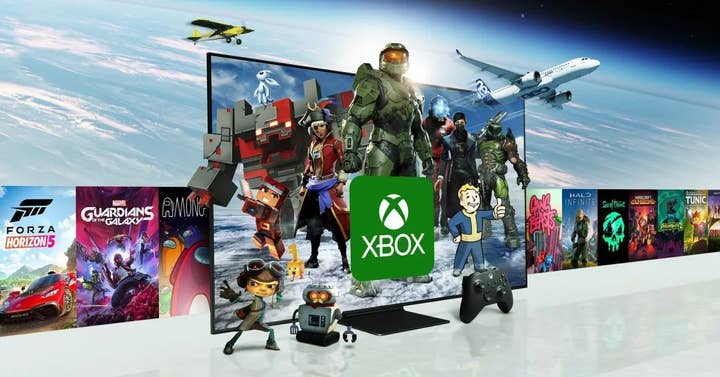Making subscription platforms work | Opinion
Harbottle & Lewis' Kostya Lobov weighs up the factors developers should consider when trying to get their game included in a subscription service
So many things come as a subscription these days -- from your favourite streaming platform, to your car.
The games industry is, in some ways, a latecomer to this, but it's making up for lost time. Xbox Game Pass now has more than 100 titles, including several exclusives, all for £10.99 per month. Sony's newly-tiered PlayStation Plus offering also boasts several hundred titles (admittedly, many of those are back-catalogue, but there are premium titles there too). From the perspective of a consumer, the value proposition is undeniable and, at times, seems too good to be true.
How do the financials of the subscription model stack up from the studio's perspective? There are two things to note here:
1. Platforms do not publicise their deal terms and payment structures, and the people who have seen them are most likely not allowed to disclose them because they are confidential.
2. There isn't a 'one size fits all' approach -- that much was clear from one of Phil Spencer's previous interviews, in which he said that Microsoft's Game Pass deals with developers were all over the place (but in a good way).

It, of course, makes sense that different studios will be offered different commercial terms as there are a number of variables that can impact the financials being offered. If the platform wants the game to be made available on an exclusive basis, then it is likely to offer a potentially sizable up front payment (paid as a lump sum or in tranches). If the game is going to be a non-exclusive title, the platform could offer a traditional usage-based revenue model. Or there could be a combination of both.
Ultimately, though, from a financial perspective, having a game added to a subscription platform is usually a positive, as it substantially de-risks the game for both studio and publisher, particularly if it happens close to launch. The parties get a welcome injection of cash, and, with some of the weight lifted from the studio's shoulders, it can focus on things like DLCs.
It does, however, potentially have wide ranging impacts on the publishing agreement and the studio/publisher relationship more generally
Impact on studio / publisher relationship
If the platform is offering an upfront payment, how that payment is dealt with as between the publisher and the studio will usually come down to the wording of the publishing agreement.
Here, some of the devil will be in the detail. Depending on how the publishing agreement is drafted, the payment may fall into the definition of "gross revenue," and therefore be included in the amounts due to be paid to the publisher (either to recoup its investment or as part of the ongoing revenue split).
One point always worth considering is that, for smaller games which make it onto a subscription service, the upfront payment might allow the publisher to recoup most, if not all, of its initial outlay, triggering a better revenue share for the studio for future sales.
We are likely to see deal terms settle down to a more familiar pattern of usage-based revenue, or a hybrid model with a smaller lump sum payable on signing
If the publishing agreement includes a sliding scale mechanism, which changes the revenue share based on the amount of revenue generated, a lump sum payment could instantly put the studio in an even better position (although, if the sliding scale is tied to unit sales as opposed to revenue, arguably this may not be the case).
In practice, more often than not, whether a publishing agreement is sufficiently well drafted to 'cope' with the game being added to a subscription service will depend on whether that is something which the parties contemplated when they were entering into the agreement. If they did, the agreement will hopefully have language which explicitly deals with that scenario. If not, and the agreement is based on a more generic and non-negotiated template used by the publisher, there could be ambiguity in how the revenue should be treated, which could cause some friction.
As ever, keeping a dialogue open and trying to understand each other's perspectives is usually the best approach here. If the contract is unclear, the parties can agree to rectify this by signing a supplementary agreement.
Negotiating the deal
Another consideration in the studio-publisher relationship is the extent to which a studio should have a say in the negotiation of the terms being offered by the subscription platform, or at least have the right to know about it and to be able to provide meaningful input on the key terms (like the amount of any upfront payment, and the duration of any exclusivity period).
If this is not agreed explicitly, the publisher may be within its right to do whatever it considers best for maximising the commercial value of the game during its natural lifespan.
How sustainable is the subscription model?
Giving away £40+ games for £10.99 per month may not, on the face of it, sound sustainable. As the financial model is in its infancy (and is unproven), there is no guarantee that commercial deals which were being offered by the platforms yesterday will be available tomorrow.
Like with other streaming services (such as Netflix and Amazon Prime), platform holders have relatively deep pockets, and in the early stages of building their customer base may be willing to spend those funds as they seek to build trust and experiment with what works best. All good things must come to an end though, so we are likely to eventually see deal terms settle down to a more familiar pattern of usage-based revenue, or a hybrid model with a smaller lump sum payable on signing.

From the consumer's perspective, subscription models can be very attractive, particularly at a time of economic turmoil. They also have the effect of democratising the ecosystem for studios, and providing more choice to consumers. Smaller, shorter, non-story driven games have the opportunity to share the stage with AAA blockbusters, without facing as much scrutiny over their cost or approaches to monetisation.
One side effect is that, eventually, subscriptions platforms may no longer need to have a large array of AAA exclusives to commercially justify their existence.
A sign of the times?
The rise of subscription platforms is also part of a wider picture of flux and consolidation across the industry and initiatives to give consumers more flexibility in how they play.
2022 has seen some of the biggest corporate acquisitions to date and, for consumers, titles are increasingly being made available on multiple platforms. The upcoming Diablo 4, for example -- the latest instalment in a series which was historically PC-first and played on a keyboard and mouse -- will come to both generations of PlayStation and Xbox, as well as PC. It will also have native controller support, cross-play and cross-progression, and couch co-op on consoles.
It's also important to remember that all of these subscription platforms are in their relatively early stages. It is unclear what happens when one or more of them begin to reach peak user numbers, or even start to experience declines. We can look to the video streaming sector for clues on what could happen next, such as the introduction of additional tiers and (whisper it) third party advertising to prop up revenues.
Notwithstanding that, the subscription model is poised to continue growing for the foreseeable future and may even become the dominant business model for some time. We are therefore bound to see more and more commercial deals of this sort.
From a legal and business perspective, the key message for both studios and publishers is to try to anticipate titles which could potentially end up on a subscription platform, and make sure that the agreement adequately deals with that eventuality, so there are no surprises for anyone involved.
